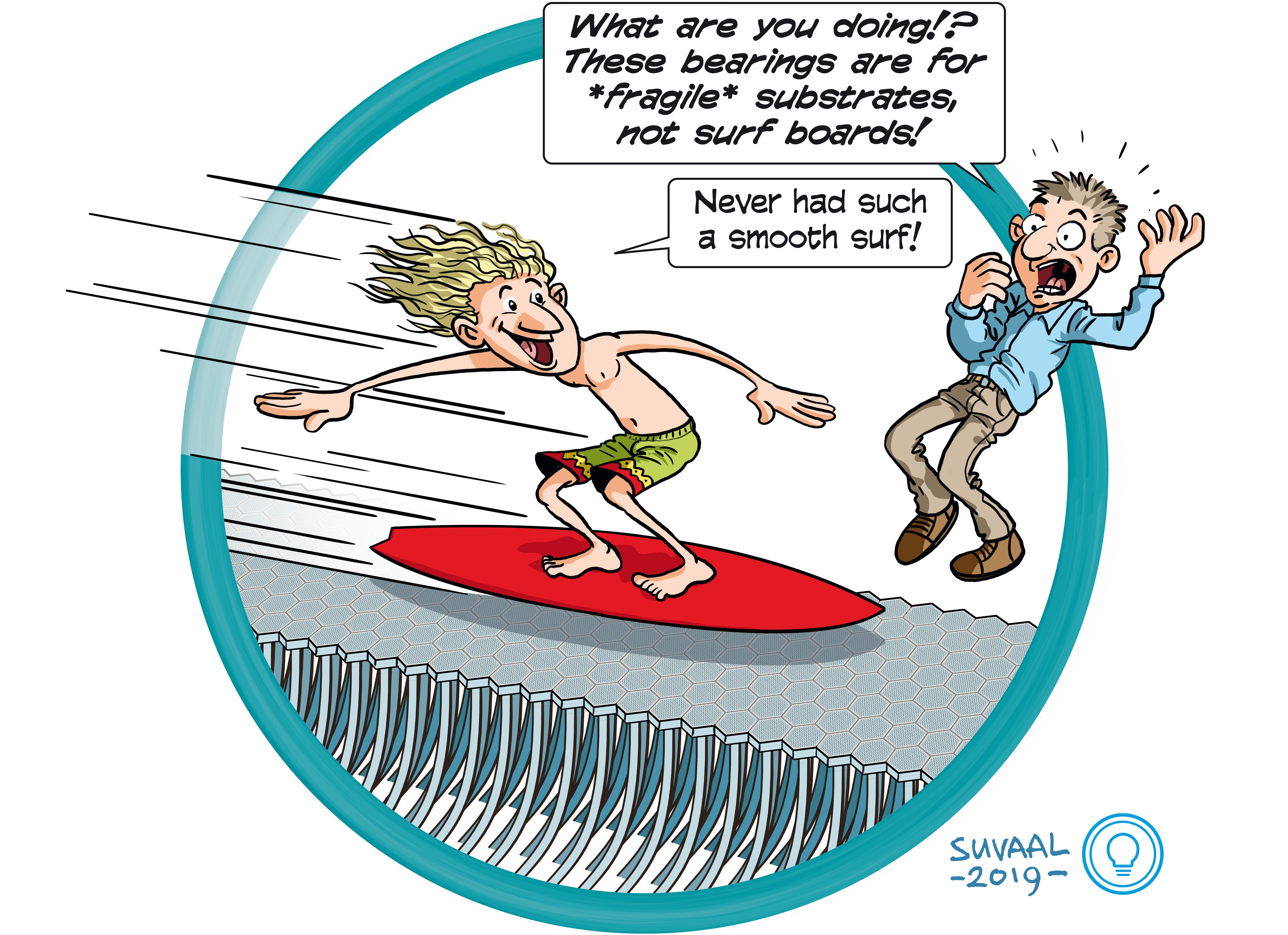Zero Friction, fiction? air bearing systems
Themes: Hi-Tech, Energy


A TRL is a measure to indicate the matureness of a developing technology. When an innovative idea is discovered it is often not directly suitable for application. Usually such novel idea is subjected to further experimentation, testing and prototyping before it can be implemented. The image below shows how to read TRL’s to categorise the innovative ideas.
Summary of the project
The researcher works in the field of mechatronic system design, tribology and tribotronics. Tribology is the study of friction, wear and lubrication in mechanical systems. Tribotronics is the emerging term for the combined study of tribology and mechatronics, i.e. the study of active and controlled bearing systems, seals, gears and other mechanical components.
Air bearings are commonly used in high precision industry for applications where friction is to be avoided for instance when there is a need to carry, position and transport thin, fragile substrates, such as Si wafers, solar cells, glass panels, and polymer foils and sheets. Current technologies to transport these substrates are mostly still based on (some) mechanical contact which can cause damage or contamination of the substrates. The challenge is to develop a system that can carry, position and transport these fragile substrates without any contact or friction.
A unique air bearing – the flower bed – system has been developed that can carry, and position substrates without any contact. Each of the flowers can tilt its surface hence changing the air flow and thus traction along the substrate, thereby moving the substrate in the desired direction. Extending this system to a larger surface also creates the opportunity to transport substrates between positions. Here the challenge still is to accurately determine the position of the substrates. Besides this the researcher is also working on increasing the efficiency at which a substrate can be moved.
What's next?
The next step for this research is to tailor the air bearing system in such a way that it can carry even thinner materials without damaging them.
Dr. Ron van Ostayen
